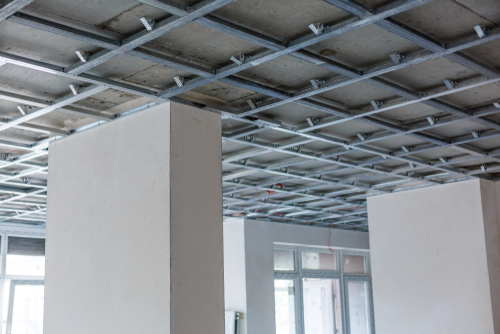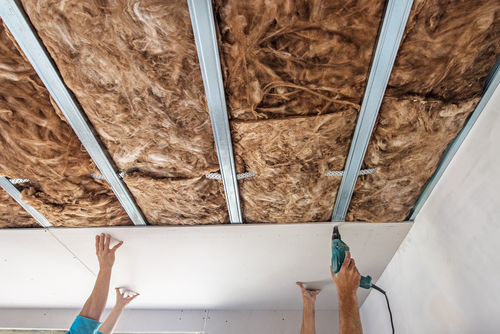
Office Partition Wall Ideas to Keep Your Employees Happy
March 8, 2022
Can I Mount TV on Partition Wall?
April 5, 2022Differences Between Partition Walls And Room Dividers

Differences between partition walls and room dividers – Choosing the right partition wall or room dividers is essential when designing a home or office. There are many different dividers available, and it can be hard to decide which one is the best for your needs. In this guide, we’ll take a look at some of the different types of dividers and how they can be used in your home or office.
We’ll also cover some of the pros and cons of using them. Here are the differences between partition walls and room dividers.
The main difference between partition walls and room dividers has to do with their longevity, the durability of each, and other risk concerns. One thing to consider is that room dividers tend to be more disjointed because they typically don’t blend perfectly with doors that form internal walls and external partitions.
Table of Contents
What are partition walls?

A partition wall is a wall that separates your home or office into different rooms. They are great for creating privacy security and creating a more efficient space. There are many different types of partition walls available, including:
Wall-mounted partitions:
These are usually installed in the ceiling and come in various sizes and styles. They can be used to separate rooms by style or function.
Room dividers:
Room dividers are similar to panel walls, but instead of being installed in the ceiling, they’re installed on the floor as movable partitions. These are usually installed in the ceiling and come in various sizes and styles. They can be used to separate rooms by style or function. You can also choose from different room dividers, including folding or sliding room dividers for extra flexibility.
Room dividers are similar to panel walls, but instead of being installed in the ceiling, they’re installed on the floor as movable partitions. You can also choose from different room dividers, including folding or sliding room dividers for extra flexibility.
Wall panels:
Wall panels are similar to wall-mounted partitions, but they’re usually installed on the floor rather than the ceiling. They’re usually made of solid wood and come in a variety of styles, shapes, and sizes.
What are room dividers?

Room dividers are movable partitions that divide your workspace into smaller spaces. They’re great for creating privacy partitioning off areas while also providing storage space and security. There are many different types of room dividers available, including:
Wall-mounted partitions:
These are usually installed in the ceiling and come in a variety of sizes and styles. They can be used to separate rooms by style or function.
Boarding up furniture:
Annex tables and workstations are great as partition walls, but they can also be used as room dividers. They mustn’t obstruct the view through the windows, so they need to create room dividers with nice clear space around the tops of the partitions.
Partition walls are pretty similar to room dividers, but they are generally thicker and come in a variety of materials. They are typically used to divide rooms and create privacy. Partition walls are made from solid wood, steel, or vinyl. The thickness of the wall can vary between 3/8″ and 1″.
The pros of using partition walls include:

They are sturdy so that they can be installed with no problem on floors or ceilings. They can also be attached to existing studs if you want to keep the look of your home’s woodwork intact. Partition walls can be painted or stained to match your décor. It is also easy to install them on an existing floor because they are thicker than room dividers.
You won’t have any trouble installing them on a ceiling if you choose the right type for your home or office space. They come in a variety of colors and styles so you can choose the one that fits your taste. Partition walls are often used as security dividers to separate areas for privacy or create office or bedroom walls.
They are pretty versatile and can help you add value by turning your home into an elegant and sought-after space.
What safety issues should I be aware of when working with room dividers?

Room dividers can be used in a way that increases safety, like when you’re installing these partitioning units on your ceiling or walls in the workplace, but this shouldn’t influence usage to adapt them for other occasions.
Like almost all other things concerning ergonomics (i.e., type of furniture, type of materials, and functions), it is essential that you also consider basic principles in determining the use of your partitions while operating around them in a work environment:
When using barrier furniture like doorstopper room dividers, the heights must be suited to their use (i.e., building) because it would not fulfill its purpose correctly if used on account of inconvenient heights.
This can significantly impact an employee’s work performance when they don’t feel comfortable using such a fixture through lack of the proper height accessibility at their respective locations of the working activity or during their shift.
There are also security measures that need consideration whenever space-room dividers (interior partitions/office partitions) have been installed directly above/overhead doorways/workstations, kitchens, and other areas of high traffic.
It is advisable to consider separating the partition from the door area as a means to secure internal workspaces and increase an employee’s security if they could potentially be robbed during a burglary or forced out through an emergency evacuation.
Differences Between Partition Walls And Room Dividers – Conclusion

In conclusion, when it comes to working in your workstation, you should use any room dividers that you need to create perfect working conditions.
They will relieve you by installing means for better alignment and positioning of your work items and help you keep tabs on what’s happening at your workplace regardless of which tasks you’re doing in there how lousy noise pollution travels from one area where more people are located.




